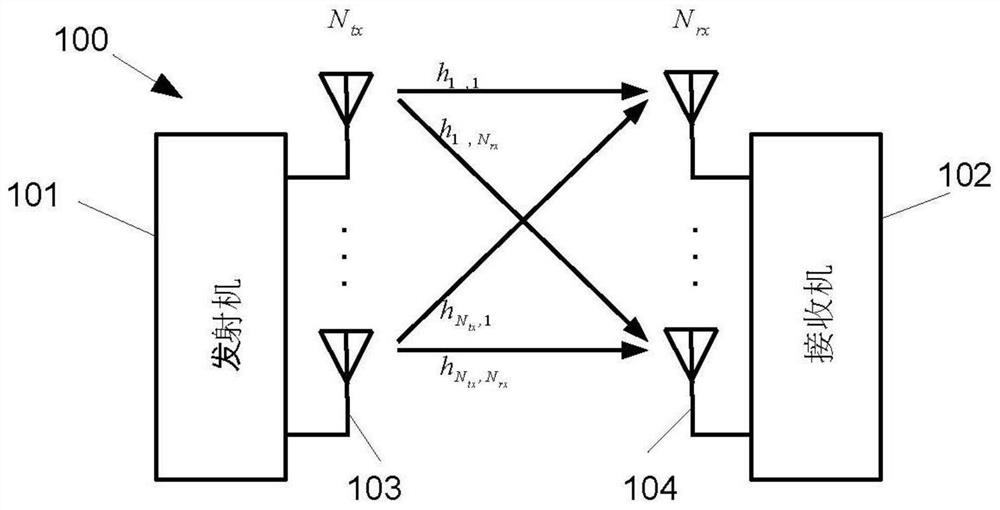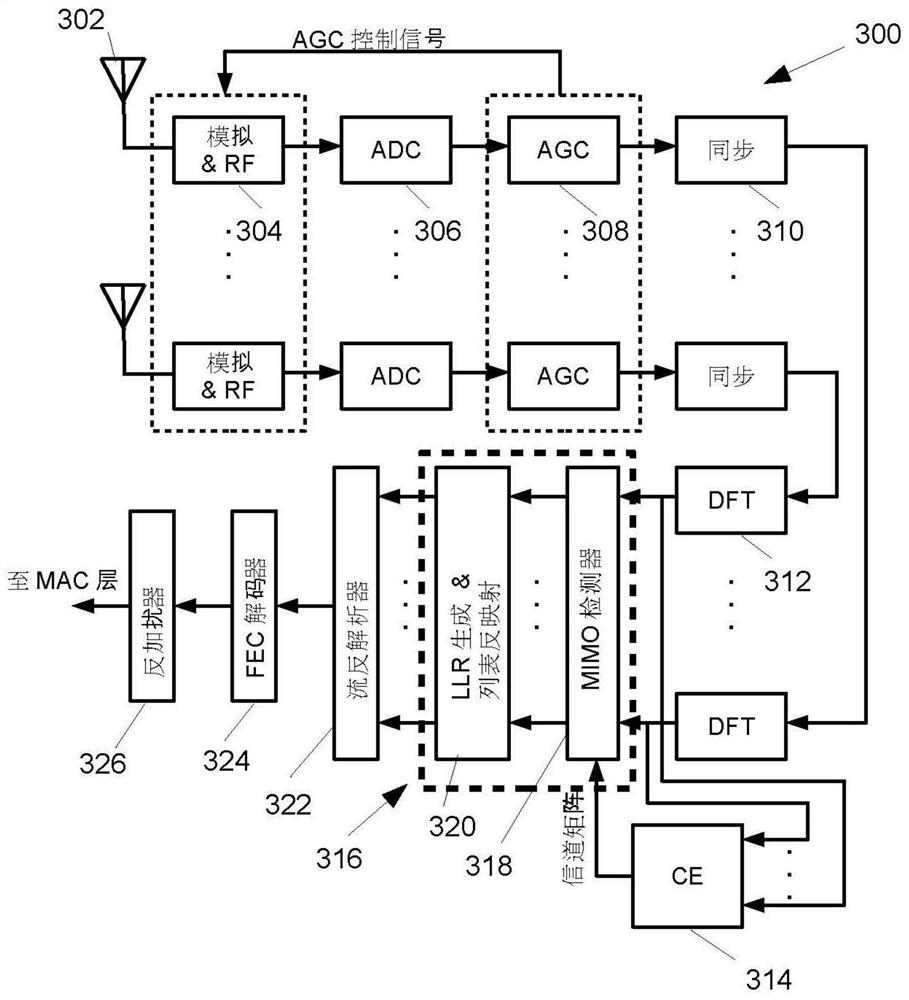MIMO-OFDM wireless signal detection method and system with channel matrix preprocessing before detection
A MIMO-OFDM and wireless communication system technology, applied in the field of low-complexity detection, can solve the problems of soft value generation without special consideration, no comprehensive consideration, and no optimization of soft value generation, etc., to achieve stable throughput, less useless expansion, Efficient and high effect
- Summary
- Abstract
- Description
- Claims
- Application Information
AI Technical Summary
Problems solved by technology
Method used
Image
Examples
Embodiment 1
[0279] Global dynamic K value allocation based on OFDM symbols.
[0280] When the N of the data loaded in the OFDM symbol sd =After the preprocessing of 48 channel matrices is finished, the search range of each search layer of each subcarrier can be determined Then the total number of points in the search range is:
[0281]
[0282] If a fine linear allocation is made, the global dynamic K value of the l-th layer of the n-th subcarrier can be calculated as follows:
[0283]
Embodiment 2
[0285] Simple graded (two-level) assignments.
[0286] find all The median of L mid , and set an offset K of the overall K value of the system δ
[0287] like but like but
Embodiment 3
[0289] The subcarriers are grouped, and the K value is dynamically assigned within the group.
[0290] For example, 48 subcarriers are divided into four groups, and search resources in each group are allocated. If each subcarrier is a group, it is the aforementioned dynamic K value allocation based on subcarriers.
PUM
 Login to View More
Login to View More Abstract
Description
Claims
Application Information
 Login to View More
Login to View More - R&D
- Intellectual Property
- Life Sciences
- Materials
- Tech Scout
- Unparalleled Data Quality
- Higher Quality Content
- 60% Fewer Hallucinations
Browse by: Latest US Patents, China's latest patents, Technical Efficacy Thesaurus, Application Domain, Technology Topic, Popular Technical Reports.
© 2025 PatSnap. All rights reserved.Legal|Privacy policy|Modern Slavery Act Transparency Statement|Sitemap|About US| Contact US: help@patsnap.com



